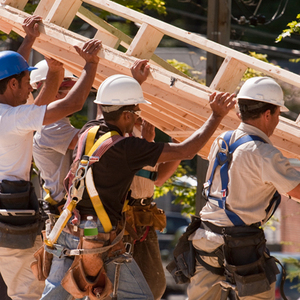The WPJ
THE WORLD PROPERTY JOURNALReal Estate Facts Not Fiction
Residential Real Estate News

4.4 Million U.S. Properties Remain in Negative Equity
Residential News » Irvine Edition | By Michael Gerrity | September 15, 2015 1:08 PM ET
759,000 U.S. Properties Also Regained Equity in Q2, 2015
According to Irvine, Ca based CoreLogic, 759,000 U.S. properties regained equity in the second quarter of 2015, bringing the total number of mortgaged residential properties with equity at the end of Q2 2015 to approximately 45.9 million, or 91 percent of all mortgaged properties.
Nationwide, borrower equity increased year over year by $691 billion in Q2 2015. The total number of mortgaged residential properties with negative equity is now at 4.4 million, or 8.7 percent of all mortgaged properties. This compares to 5.1 million homes, or 10.2 percent, that had negative equity in Q1 2015, a quarter-over-quarter decrease of 1.5 percentage points. Compared with 5.4 million homes, or 10.9 percent, reported for Q2 2014, the number of underwater homes has decreased year over year by 1.1 million, or 19.4 percent.
Negative equity, often referred to as "underwater" or "upside down," refers to borrowers who owe more on their mortgages than their homes are worth. Negative equity can occur because of a decline in home value, an increase in mortgage debt or a combination of both.
For the homes in negative equity status, the national aggregate value of negative equity was $309.5 billion at the end of Q2 2015, falling approximately $28.5 billion from $338 billion in Q1 2015. On a year-over-year basis, the value of negative equity declined overall from $350 billion in Q2 2014, representing a decrease of 11.6 percent in 12 months.
Of the more than 50 million residential properties with a mortgage, approximately 9 million, or 17.8 percent, have less than 20 percent equity (referred to as "under-equitied"), and 1.1 million, or 2.3 percent, have less than 5 percent equity (referred to as near-negative equity). Borrowers who are "under-equitied" may have a more difficult time refinancing their existing homes or obtaining new financing to sell and buy another home due to underwriting constraints. Borrowers with near-negative equity are considered at risk of moving into negative equity if home prices fall.
"Home price appreciation and foreclosure completions both reduce the number of homeowners with negative equity, the latter because most homeowners who lost homes through foreclosure had some level of negative equity," said Frank Nothaft, chief economist for CoreLogic. "Between June 2014 and June 2015, the CoreLogic national Home Price Index (HPI) rose 5.6 percent and we reported the number of homes completing foreclosure proceedings exceeded one-half million. Both of these factors helped reduce the number of homeowners with negative equity by one million over the year ending in June."
"For much of the country, the negative equity epidemic is lifting. The biggest reason for this improvement has been the relentless rise in home prices over the past three years which reflects increasing money flows into housing and a lack of housing stock in many markets," said Anand Nallathambi, president and CEO of CoreLogic. "CoreLogic predicts home prices to rise an additional 4.7 percent over the next year, and if this happens, 800,000 homeowners could regain positive equity by July 2016."
Market Highlights as of Q2 2015:
- Nevada had the highest percentage of mortgaged residential properties in negative equity at 20.6 percent, followed by Florida (18.5 percent), Arizona (15.4 percent), Rhode Island (13.8 percent) and Illinois (13.1 percent). Combined, these five states accounted for 31.7 percent of negative equity in the U.S.
- Texas had the highest percentage of mortgaged residential properties in positive equity at 97.9 percent, followed by Alaska (97.6 percent), Hawaii (97.5 percent), Montana (97.2 percent) and Colorado (96.7 percent).
- Of the 25 largest Core Based Statistical Areas (CBSAs) based on mortgage count, Tampa-St. Petersburg-Clearwater, FL had the highest percentage of mortgaged residential properties in negative equity at 20.2 percent, followed by Phoenix-Mesa-Scottsdale, AZ (15.4 percent), Chicago-Naperville-Arlington Heights, IL (15.3 percent), Riverside-San Bernardino-Ontario, CA (12.3 percent) and Warren-Troy-Farmington Hills, MI (11.8 percent).
- Of the same largest 25 CBSAs, Houston-The Woodlands-Sugar Land, TX had the highest percentage of mortgaged properties with positive equity at 98.1 percent, followed by Portland-Vancouver-Hillsboro, OR-WA (97.8 percent), Dallas-Plano-Irving, TX (97.8 percent), Anaheim-Santa Ana-Irvine, CA (97.5 percent) and Denver-Aurora-Lakewood, CO (97.5 percent).
- Of the total $309 billion in negative equity, first liens without home equity loans accounted for $168 billion, or 54 percent, in aggregate negative equity, while first liens with home equity loans accounted for $142 billion, or 46 percent.
- Approximately 2.6 million underwater borrowers hold first liens without home equity loans. The average mortgage balance for this group of borrowers is $239,000 and the average underwater amount is $64,000.
- Approximately 1.7 million underwater borrowers hold both first and second liens. The average mortgage balance for this group of borrowers is $303,000 and the average underwater amount is $82,000.
- The bulk of positive equity for mortgaged properties is concentrated at the high end of the housing market. For example, 95 percent of homes valued at greater than $200,000 have equity, compared with 87 percent of homes valued at less than $200,000.
Sign Up Free | The WPJ Weekly Newsletter
Relevant real estate news.
Actionable market intelligence.
Right to your inbox every week.
Real Estate Listings Showcase
Related News Stories
Residential Real Estate Headlines
- U.S. Home Sales Continue Slump in April Despite Growing Inventory
- Opportunity Zone Home Prices Surpass National Growth in Half of U.S. Markets
- Spring Home Sales Sputter in U.S. as High Costs Weigh on Buyers
- Ireland's Residential Rents Surge in Early 2025, Fastest Rise in Two Decades
- U.S. Homebuilder Confidence Drops Sharply in May, Hits 3 Year Low
- U.S. Cities Where Renters Need $100K Salary to Live Doubles Since 2020
- Tuscany's Property Boom Driven by Wealthy Foreign Buyers
- Home Price Appreciation Continues to Slow in U.S.
- California Home Sales Dip in March Amid Rising Economic Concerns
- U.S. Mortgage Rates Continue Downward Trend
- Pending Home Sales in U.S. Increase in March
- U.S. Home Values Flatline in March as Sellers Outnumber Buyers
- Greater Miami Area Residential Sales Cool in March
- NAR Reports Existing Home Sales Tumble in March, Hit 16-Year Low
- U.S. New Home Sales Uptick in March
- Florida's California Moment: Skyrocketing Housing, HOA and Insurance Costs Take Center Stage in 2025
- Home Seller Concessions Climbing as Market Conditions Shift in U.S.
- SENTIENT MORTGAGE Consumer-to-Lender AI Matching Engine Commences Development
- U.S. Homes Sold at Slowest Pace in 6 Years in March, Demand Sluggish
- Trump Tariffs Test U.S. Housing Markets Reliance on International Trade
- India Home Prices Nationwide Climbed 9 Percent Annually in 2024
- U.S. Home Remodeling Industry Sentiment Declines in Early 2025
- Canadian Home Sales Slide in February Amid U.S. Trade Tensions
- Americans Spent $603 Billion on Home Remodeling Projects in 2024
- U.S. Mortgage Demand Spikes 20 Percent in Early April as Rates Drop
- Las Vegas Area Home Prices Uptick 4.3 Percent Annually in March
- Single-Family Rent Growth in U.S. Trends Upward in 2025
- U.S. Mortgage Rates Tick Down Post Trump Tariffs Commencement
- President Trump's 'Liberation Day' Tariffs Potential Impact on the U.S. Housing and Mortgage Markets
- Baby Boomers Biggest Cohort of U.S. Home Buyers in 2025 as Millennials Decline
- U.S. Monthly Housing Payments Hit Record High in 2025
- U.S. Pending Home Sales Uptick in February
- Global Prime Residential Rent Slowdown Continued in Late 2024
- Ireland Home Price Inflation Hits 8 Year High in Early 2025
- Existing Home Sales in America Uptick in February
- Great Miami Area Residential Sales Decline 15 Percent Annually in February
- Mortgage Rates Uptick in Mid-March, Ending 9-Week Decline in U.S.
- World Property Ventures Builds the Future of Real Estate with New Funding Round
- U.S. Builder Sentiment Declines Amid Economic Uncertainty and Rising Costs
- Black Homeownership Rates in U.S. Enjoy Largest Annual Increase of All Racial Groups
Reader Poll
Marketplace Links
This website uses cookies to improve user experience. By using our website you consent in accordance with our Cookie Policy. Read More





